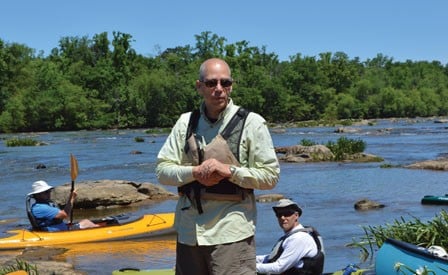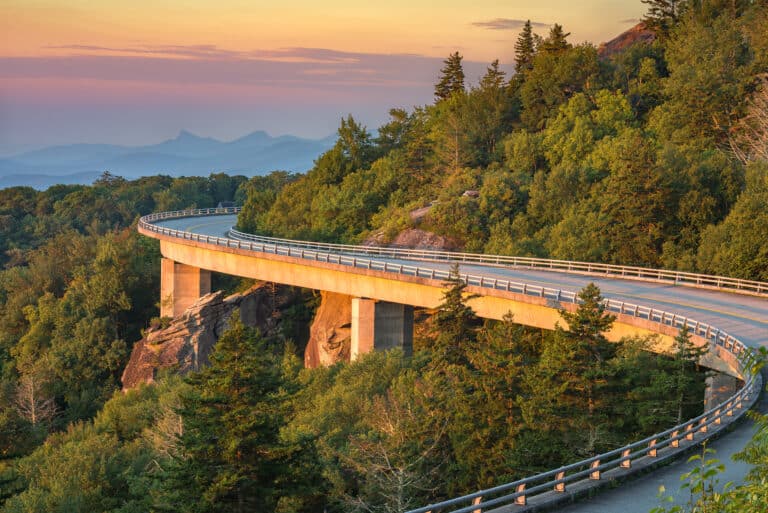The Catawba River was recently named the most endangered river in the country. It stretches from the mountains of North Carolina to the Wateree Watershed in South Carolina and then to the Atlantic Ocean. From source to sea, it flows over 400 miles. Along the way, it meets several challenges: coal ash ponds, dams, agricultural draws, nutrient and sewage spills and recreation and drinking water needs for a growing population.
One man is working to protect the river. His name is Rick Gaskins, a Harvard educated environmental lawyer and the executive director of the Catawba Riverkeeper Foundation.
Just how bad is the Catawba currently?
In 2008, American Rivers, an organization that works to protect America’s waterways, rated the Catawba as America’s Most Endangered River (download the PDF report here). Plus, just this year, American Rivers rated the Catawba as the fifth worst river in the United States due to coal ash pollution. In 2010 and 2012, The Southern Environmental Law Center, a nonprofit that uses the law to fight for protection of the Southeastern environment, listed the Catawba River as one of the top ten endangered places in the Southeast. In 2011, the Union of Concerned Scientists, an organization that uses science to push for policy change, found, due to power plants, that the Catawba was the fourth most stressed river in the United States.
Which sections of the Catawba are in the worst shape?
That is hard to answer. If the standard is whether the Catawba is fishable, for example, then one hundred percent of the basin fails to meet the unrestricted fishability standard. There are fish advisories throughout the Catawba basin for excessive levels of mercury in some types of fish. Burning coal is the primary source for most mercury found in the water. High levels of mercury affect the neurological development of children and can cause learning disabilities and other lifelong disabilities. High levels of mercury are especially toxic to children and pregnant women.
Is the river getting better or worse?
There is some improvement. For example, Charlotte has worked hard to restore the natural state of the tributaries to the Catawba, even instituting buffer areas. Also, some sewage plants are doing better treating sewage. However, the overall trend is not good.
Do you ever use litigation to help protect the Catawba?
At times we use litigation to solve issues, but that is our last resort. Our first step is to talk to the source of the problem. If the source does not correct the issue, then we contact the appropriate regulatory body, hoping for an enforcement action.
We’re currently involved in litigation against the North Carolina Department of Transportation to stop a proposed toll road that would potentially damage water over discharges from coal ash lakes into Mountain Island Lake, part of the Catawba River. This discharge is a direct threat to Charlotte’s drinking water.
How about lobbying legislators?
We aren’t large enough to have paid lobbyists, but we encourage members to use grassroots lobbying. We get information to our volunteers so they can talk to their legislators. When there is a bill that directly affects the waterway, then the foundation might rent a van and take volunteers to their legislators in Raleigh.
Is it true that the Catawba could run out of water?
Current projections are that the region’s demand for water will exceed our quantity of water by the year 2048. Industry and agriculture must use less water. Forty-eight percent of the water consumed from the Catawba is used for cooling power plants. This can and should be reduced. Also, a big chunk of the water is consumed by towns outside the basin. In short, these towns want water from the Catawba River, but they don’t return water to the Catawba. This must be regulated.
What are the biggest threats to the Catawba?
Coal-burning power plants and their coal ash waste storage. On any scale, coal ash ponds surrounding the Catawba are given the highest hazard potential. Other major water quality problems are by-products of poor development practices that result in large amounts of polluted storm water, poor treatment of sewage, and excessive water usage. Sewage spills and inadequate treatment of sewage are also a major problem. Sewage systems fail with regularity. State regulators are underfunded; one inspector might be responsible for thousands of sites. And even when current regulations are enforced, they are not enough to maintain a high level of water quality.
How do dams affect the river and its natural environment?
There are 14 dams along the length of the Catawba. These are primarily used to generate electricity and to create a source of cooling water for thermoelectric power plants. Power plants use the water for cooling, then they dump hot water into the Catawba after using it.
There are sections of the Catawba that rest between two power plants, one upstream and one downstream. During peak power usage this particular section will have little to no water flow. In fact, it might have backward flow if the power plant upstream is larger than the plant downstream.








